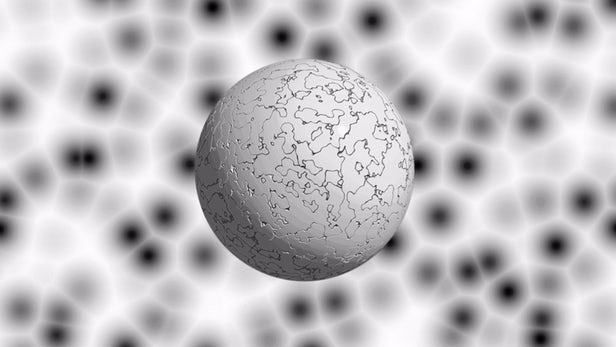Scientists at Stanford and the University of California have found evidence of Majorana fermions – particles that are their own antiparticles. (Credit: spgirolamo/Depositphotos).
Every fundamental particle in the universe has an antiparticle, which has the same mass but the opposite charge. If a particle should ever meet its antiparticle, the two would annihilate each other in a flash of energy. But it’s long been theorized that there’s an exception to the rule, with certain particles that are actually their own antiparticles. Now, scientists from Stanford and the University of California have found the first strong evidence for this type of particle, which they dub the “angel particle.”
The theory dates back to 1937, when physicist Ettore Majorana highlighted a gap in the fermion family of particles. Protons, electrons, neutrons, neutrinos and quarks are all fermions, and all have corresponding antiparticles, but according to Majorana’s calculations, there should be particles that are their own antiparticles.
Since they have no charge, neutrons and neutrinos were the best candidates to be these Majorana fermions, but antineutrons have since been discovered. There’s still a big question mark hanging over neutrinos though, and experiments are currently underway to determine if they are in fact their own antiparticle. However, the difficulty of the experiments means an answer is still more than a decade away.
In the meantime, the most likely way to find Majorana fermions is by looking for “quasiparticles.” As the name suggests, these aren’t quite natural particles, but they arise out of the collective behavior of electrons and have certain properties of particles. If that’s hard to visualize, the Encyclopaedia Britannica explains the concept like bubbles in a drink: bubbles also arise out of the “collective behavior” of the chemicals in the drink, and although they aren’t really independent objects, bubbles do have measurable properties like objects, including size, shape, etc.
In the same way, quasiparticles might not occur outside of very specific conditions, but they can be considered to be Majorana fermions if they exhibit all the right properties. Now Stanford and UC researchers say they’ve found a “smoking gun” signature that points to the presence of these hypothetical fermions.
“Our team predicted exactly where to find the Majorana fermion and what to look for as its ‘smoking gun’ experimental signature,” says Shoucheng Zhang, one of the senior authors of the research paper. “This discovery concludes one of the most intensive searches in fundamental physics, which spanned exactly 80 years.”
To make these quirky quasiparticles show themselves, the team carefully constructed their very specific “drink,” made up of thin films of two quantum materials stacked on top of one another. The end result is a superconducting topological insulator, which allows electrons to move quickly along the edges of the material’s surface but not through the middle. Adding a pinch of magnetic material to the mix made the electrons flow in one direction along one edge, and the opposite direction along the other.
The researchers then swept a magnet over the material, which caused all the electrons to slow down, stop and switch direction. The reversal happened in a jerky, staggered motion that the team likens to stairs in a staircase. Quasiparticles began to emerge from the material in pairs, traveling along the same path as the electrons, but there was a key difference: when they stopped and turned around, they did so in “steps” exactly half as high as the electrons. That’s because each is essentially only half of a particle, since one out of each quasiparticle pair is lost along the way. And that phenomenon was exactly the evidence the team had been looking for.
Zhang proposes that the team’s discovery be named the “angel particle” after the Dan Brown novel Angels and Demons, which features a bomb powered by the meeting of matter and antimatter. In the long run, Majoranas could find practical application in making quantum computers more secure.
The research was published in the journal Science, and Zhang gives a presentation on the findings in the video below.
Source: Stanford University
(For the source of this, and many other important science-related articles, and to watch the video mentioned above, please visit: https://newatlas.com/angel-particle-own-antiparticle/50579/)









